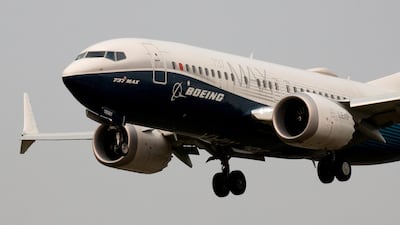Global deliveries for narrow-body jets will lead the post-pandemic fleet recovery in the next 10 years as airlines adjust to the realities of a smaller travel market, a new report shows.
Single-aisle aircraft deliveries are expected to hold up reasonably well, with cumulative deliveries approximately 90 per cent of pre-Covid expectations over the 10 years, according to management consultancy Oliver Wyman's Global Fleet and MRO Forecast 2021‑2031.
Deliveries will be bolstered by the US and European aviation regulators' decision to recertify the Boeing 737 Max for commercial service and by sales of the long-range Airbus A321LR, it said.
"For years, the narrow-body share of the total fleet has increased as the improving range capability and attractive seat mile efficiency of the class have made the aircraft the choice of low-cost carriers," the report said. "This trend is expected to continue as more airlines align fleets to the demand realities of Covid-19."
While the aviation industry has pinned its hope for recovery on the Covid-19 vaccine, infection flare-ups and mutant variants of the virus have have dashed its prospects for a steady return of scheduled flights as governments impose tighter travel restrictions.
At its lowest point during the pandemic, the global fleet had only about 13,000 aircraft in service, less than half the number flying in January 2020, when the outbreak began to spread.
At the beginning of 2021, the fleet rose to more than 23,700 aircraft. By 2031, Oliver Wyman forecasts the fleet will number more than 36,500.
However, this is well below pre-Covid projections, which put the 2021 global fleet at 28,800 and the 2030 fleet at more than 39,000.
As the largest aircraft class, narrow-bodies make up 60 per cent of the global fleet, up from 58 per cent at the start of 2020. With expected average growth of 3.5 per cent annually over the next 10 years from its pre-Covid size, the narrow-body share of the global fleet will expand to 65 per cent by 2031, the report showed.
By contrast, widebody aircraft's share of the global fleet will drop almost two percentage points over the next decade, with average annual growth of just 1.6 per cent anticipated for the widebody fleet over the forecast period, the report said.
This is due to falloff in international and business travel driven by changing corporate travel policies and government restrictions, the authors said.
Long-haul travel, on which wide-body aircraft such as the Airbus A380 or Boeing 747 is deployed, is expected to be the slowest segment to recover, according to the International Air Travel Association (Iata).
Airlines will not recover to 2019 levels of operations until at least 2022, with recovery in parts of the aerospace market lagging by a year or two, according to Oliver Wyman.
Iata expects it will take until 2024 for passenger traffic to return to pre-crisis levels.
For consumers, the slow recovery may mean fewer direct and less frequent routes — at least until the pandemic is under control and normal economic activity returns.
"Covid has created a long list of challenges never seen before in modern commercial aviation," Tom Cooper, an Oliver Wyman vice president and one of the authors of the report, said. "It will take the next few years for the fleet to adjust and return to stable growth, but even after 10 years, the industry will never fully regain all that it has lost from the pandemic."
With cash preservation the top priority for airlines, aerospace manufacturers and maintenance, repair, and overhaul (MRO) service providers are under pressure.
Fewer aircraft flying means fewer planes need to be produced or repaired.
The impact of Covid on the MRO market will also be significant -- both in the short and long term.
Short term, demand in 2020 and 2021 is expected to be 33 per cent, or $60 billion, below pre-Covid projections for the combined two years, the report said. Over the next 10 years, the industry will lose more than $95bn in revenue compared with pre-Covid expectations.


